Zone
Crash of a Cessna 402 in Coventry: 4 killed
Date & Time:
Aug 17, 2008 at 1136 LT
Registration:
G-EYES
Survivors:
No
Schedule:
Coventry - Coventry
MSN:
402-0008
YOM:
1979
Crew on board:
4
Crew fatalities:
Pax on board:
0
Pax fatalities:
Other fatalities:
Total fatalities:
4
Captain / Total hours on type:
125.00
Copilot / Total hours on type:
339
Circumstances:
Cessna 402C aircraft G-EYES was engaged in flight calibration training and was making an ILS approach to Runway 23 at Coventry Airport when it was involved in a mid-air collision with a Rand KR-2 aircraft, G-BOLZ, operating in the visual circuit. The collision occurred in Class G (uncontrolled) airspace. The four occupants of G-EYES and the single occupant of G-BOLZ received fatal injuries.
Probable cause:
The investigation identified the following primary causal factor:
The two aircraft collided because their respective pilots either did not see the other aircraft, or did not see it in time to take effective avoiding action.
The investigation identified the following contributory factors:
1. The likelihood that the crew of G-EYES would see G-BOLZ in time to carry out effective avoiding action was reduced by the small size of G-BOLZ, its position relative to G-EYES and the high rate of closure between the aircraft.
2. Insufficient or inaccurate information was provided to the pilots, which did not assist them in fulfilling their duty to take all possible measures to avoid collisions with other aircraft.
3. The Aerodrome Controller’s sequencing plan, which was based on an incomplete understanding of the nature of G-EYES’ flight, was unlikely to have been successful. By the time the risk of a collision was identified, it was too late to devise an effective method of resolving the situation.
4. There were no effective measures in place to give G-EYES priority over traffic in the visual circuit
The two aircraft collided because their respective pilots either did not see the other aircraft, or did not see it in time to take effective avoiding action.
The investigation identified the following contributory factors:
1. The likelihood that the crew of G-EYES would see G-BOLZ in time to carry out effective avoiding action was reduced by the small size of G-BOLZ, its position relative to G-EYES and the high rate of closure between the aircraft.
2. Insufficient or inaccurate information was provided to the pilots, which did not assist them in fulfilling their duty to take all possible measures to avoid collisions with other aircraft.
3. The Aerodrome Controller’s sequencing plan, which was based on an incomplete understanding of the nature of G-EYES’ flight, was unlikely to have been successful. By the time the risk of a collision was identified, it was too late to devise an effective method of resolving the situation.
4. There were no effective measures in place to give G-EYES priority over traffic in the visual circuit
Final Report:

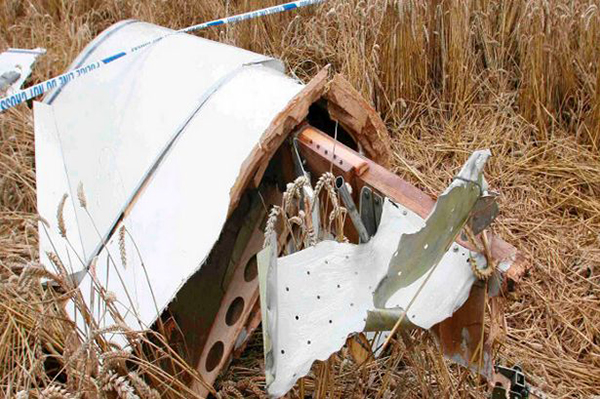

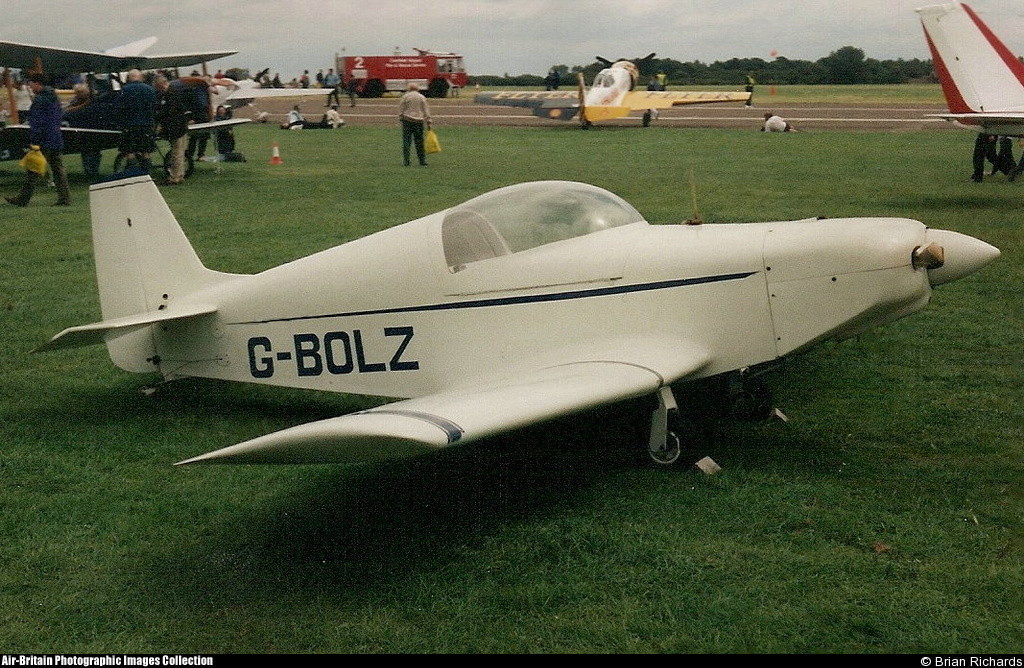
Ground collision with a Fokker F27 in Edinburgh
Date & Time:
Feb 2, 2008 at 2115 LT
Registration:
TC-MBG
Survivors:
Yes
Schedule:
Edinburgh - Coventry
MSN:
10459
YOM:
1971
Crew on board:
2
Crew fatalities:
Pax on board:
0
Pax fatalities:
Other fatalities:
Total fatalities:
0
Captain / Total hours on type:
2745.00
Circumstances:
The aircraft was scheduled to operate a night cargo flight from Edinburgh to Coventry. The weather conditions at Edinburgh Airport were wintry with snowfall, which required the aircraft to be de-iced. Shortly after both engines had been started, the commander signalled to the marshaller to remove the Ground Power Unit (GPU) from the aircraft, which was facing nose out from its stand, down a slight slope. As the marshaller went to assist his colleague to remove the GPU to a safe distance prior to the aircraft taxiing off the stand, the aircraft started to move forward slowly, forcing them to run to safety. The flight crew, who were looking into the cockpit, were unaware that the aircraft was moving. It continued to move forward until its right propeller struck the GPU, causing substantial damage to the GPU, the propeller and the engine. The ground crew were uninjured. No cause as to why the aircraft moved could be positively identified.
Probable cause:
The aircraft moved forward inadvertently after engine start, causing its right propeller to strike a GPU. Possible explanations include that the parking brake was not set, the chocks had slipped from the nosewheel, or the chocks were removed prematurely. There was insufficient evidence to determine which of these scenarios was the most likely. Contributory factors were: the aircraft was facing down a slight downslope, the ramp was slippery due to the weather conditions and the flight crew increased engine speed to top up the pneumatic system pressure. The airport operator’s instructions contained in MDD 04/07 required aircraft facing nose-out on North Cargo Apron stands to be towed onto the taxiway centreline, prior to starting engines. Had these instructions been complied with, the accident would probably have been avoided.
Final Report:
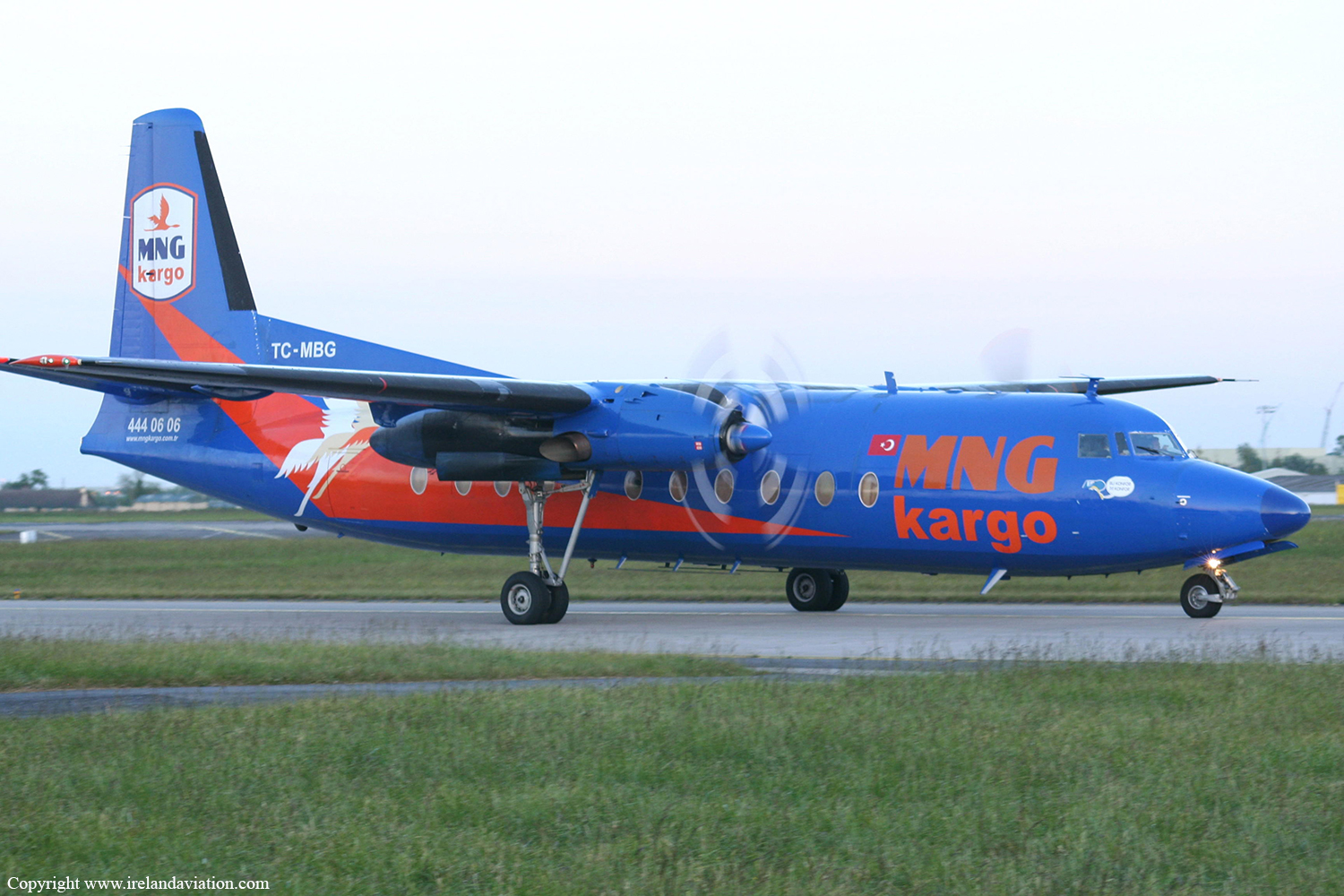
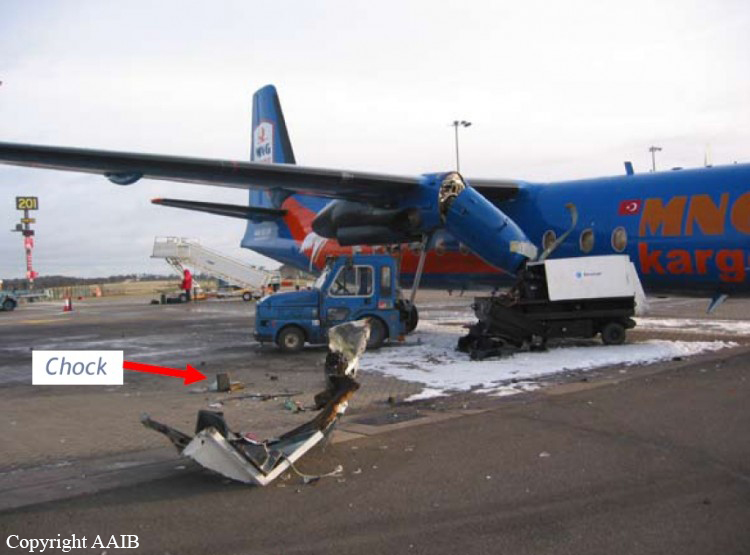
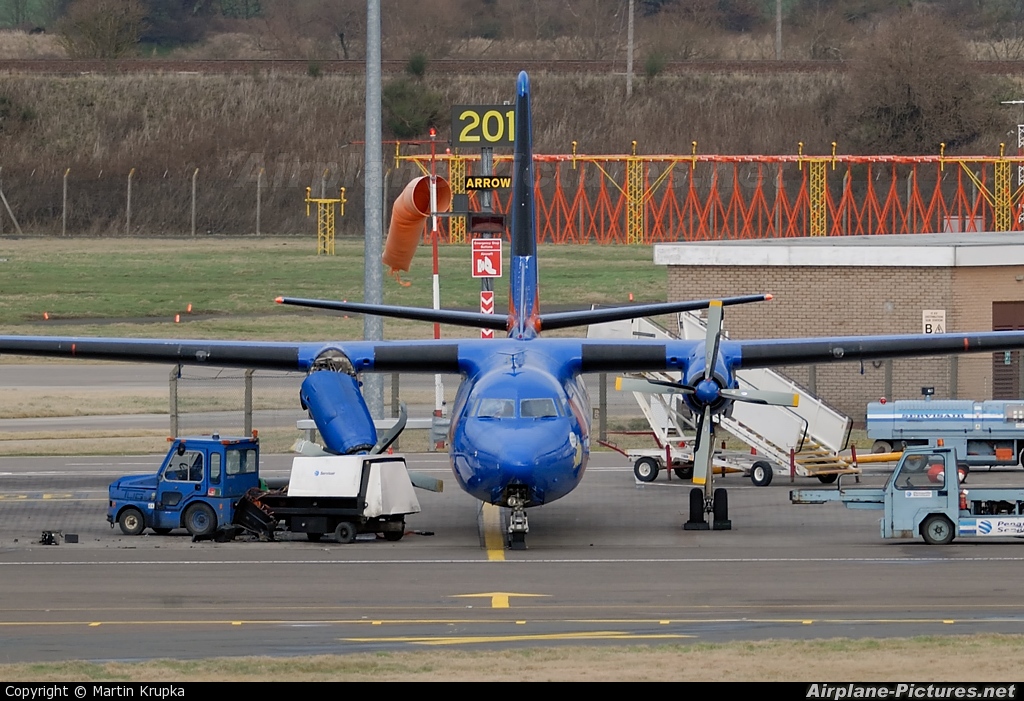

Crash of a Boeing 737-200 in Coventry: 5 killed
Date & Time:
Dec 21, 1994 at 0953 LT
Registration:
7T-VEE
Survivors:
No
Schedule:
Algiers - Amsterdam - Coventry
MSN:
20758
YOM:
1973
Flight number:
AH702P
Crew on board:
3
Crew fatalities:
Pax on board:
2
Pax fatalities:
Other fatalities:
Total fatalities:
5
Captain / Total hours on type:
2187.00
Copilot / Total hours on type:
2055
Aircraft flight hours:
45633
Circumstances:
The Boeing 737, named "Oasis" was owned and operated by Air Algerie and had been leased by Phoenix Aviation in order to operate a series of live animal export flights from the UK to France and the Netherlands. On December 21, at 06:42 the plane departed from Amsterdam for a flight to Coventry. Weather at Coventry worsened and when arriving near Coventry, the RVR for runway 23 was 700 metres. The aircraft was not able to receive the Coventry runway 23 ILS as its dual navigation receiver system was not to an updated 40 channel ILS standard, so an SRA approach was flown. The radar guidance was completed at 0,5 miles from touchdown; the commander decided to discontinue the approach and execute a go-around. A holding pattern was then taken up at 07:44. When holding, the RVR further reduced to 600 m and the flight diverted to East Midlands to wait on the ground for weather improvement. The aircraft landed there at 08:08. At around 09:00 weather conditions improved to 1200 m visibility and an overcast cloud base at 600 feet. The flight departed East Midlands at 09:38 and climbed to FL40. Approaching Coventry, the crew received radar vectors for a runway 23 approach. After some initial confusion about the heading (the controller wanted the crew to turn left for 010°, while the crew understood 100°) the turn was continued to 260° and the SRA approach started at 12 miles from touchdown. The aircraft descended below the Minimum Descent Height (MDH) for the approach procedure and collided with an 86 feet high (291 feet ams) electricity transmission tower (pylon) which was situated on the extended centreline of the runway, some 1.1 miles from the threshold. The collision caused major damage to the inboard high lift devices on the left wing and the left engine. The consequent loss of lift on the left wing and the thrust asymmetry, caused the aircraft to roll uncontrollably to the left. When passing through a wings vertical attitude, the left wingtip impacted the gable end of a house. The aircraft continued rolling to an inverted attitude and impacted the ground in an area of woodland close to the edge of the housing conurbation. An intense fire ensued.
Probable cause:
The following factors were reported:
- The flight crew allowed the aircraft to descend significantly below the normal approach glide path during a Surveillance Radar Approach to runway 23 at Coventry Airport, in conditions of patchy lifting fog. The descent was continued below the promulgated Minimum Descent Height without the appropriate visual reference to the approach lighting or the runway threshold.
- The standard company operating procedure of cross-checking altimeter height indications during the approach was not observed and the appropriate Minimum Descent Height was not called by the non handling pilot.
- The performance of the flight crew was impaired by the effects of tiredness, having completed over 10 hours of flight duty through the night during five flight sectors which included a total of six approaches to land.
- The flight crew allowed the aircraft to descend significantly below the normal approach glide path during a Surveillance Radar Approach to runway 23 at Coventry Airport, in conditions of patchy lifting fog. The descent was continued below the promulgated Minimum Descent Height without the appropriate visual reference to the approach lighting or the runway threshold.
- The standard company operating procedure of cross-checking altimeter height indications during the approach was not observed and the appropriate Minimum Descent Height was not called by the non handling pilot.
- The performance of the flight crew was impaired by the effects of tiredness, having completed over 10 hours of flight duty through the night during five flight sectors which included a total of six approaches to land.
Final Report:





Crash of a Vickers 813 Viscount in Uttoxeter: 1 killed
Date & Time:
Feb 25, 1994 at 1946 LT
Registration:
G-OHOT
Survivors:
Yes
Schedule:
Edinburgh - Coventry
MSN:
349
YOM:
1958
Flight number:
BWL4272
Crew on board:
2
Crew fatalities:
Pax on board:
0
Pax fatalities:
Other fatalities:
Total fatalities:
1
Captain / Total hours on type:
1121.00
Copilot / Total hours on type:
2181
Aircraft flight hours:
50995
Circumstances:
While on a cargo from Edinburgh to Coventry, cruising at FL150, the crew encountered severe icing conditions when engines n°2 and 3 failed. The crew was cleared to initiate an emergency descent to FL070 and FL050 and elected to divert to Birmingham Airport. Shortly later, he was able to restart the engine n°2 when the engine n°4 failed as well. The aircraft entered an uncontrolled descent and crashed in a wooded area located in Uttoxeter, about 45 km north of Birmingham Airport. The copilot was seriously injured and the captain was killed.
Probable cause:
The following causal factors were identified:
- Multiple engine failures occurred as a result of flight in extreme icing conditions,
- Incomplete performance of the emergency drills by the crew, as a result of not referring to the Emergency Checklist, prejudiced the chances of successful engine re-starts,
- Crew actions for securing and re-starting the failed engines, which were not in accordance with the operator's procedures, limited the power available. The drag from two unfeathered propellers of the failed engines and the weight of the heavily iced airframe resulted in a loss of height and control before the chosen diversion airfield could be reached,¨
- Poor Crew Resource Management reduced the potential for emergency planning, decision making and workload sharing. Consequently, the crew had no contingency plan for the avoidance of the forecast severe icing conditions, and also was unaware of the relative position of a closer diversion airfield which could have been chosen by making more effective use of air traffic services.
- Multiple engine failures occurred as a result of flight in extreme icing conditions,
- Incomplete performance of the emergency drills by the crew, as a result of not referring to the Emergency Checklist, prejudiced the chances of successful engine re-starts,
- Crew actions for securing and re-starting the failed engines, which were not in accordance with the operator's procedures, limited the power available. The drag from two unfeathered propellers of the failed engines and the weight of the heavily iced airframe resulted in a loss of height and control before the chosen diversion airfield could be reached,¨
- Poor Crew Resource Management reduced the potential for emergency planning, decision making and workload sharing. Consequently, the crew had no contingency plan for the avoidance of the forecast severe icing conditions, and also was unaware of the relative position of a closer diversion airfield which could have been chosen by making more effective use of air traffic services.
Final Report:



